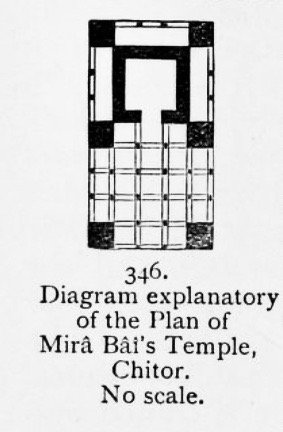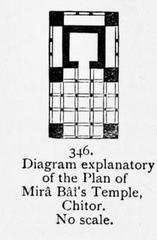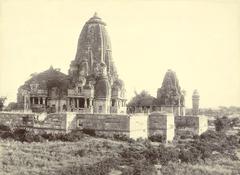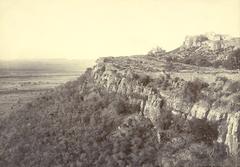
Mirabai Temple Visiting Hours, Tickets, and Complete Guide to Chittorgarh Historical Sites
Introduction
Mirabai Temple, also known as Meera Bai Temple, is a significant cultural and spiritual landmark located within the UNESCO World Heritage Site of Chittorgarh Fort in Rajasthan, India. Revered as a tribute to the legendary poet-saint Meera Bai, this temple is a vibrant testament to Rajasthan’s rich devotional heritage and Indo-Aryan architectural tradition. This detailed guide provides essential information on Mirabai Temple visiting hours, ticket details, accessibility, visitor tips, and how to make the most of your trip to Chittorgarh’s historical sites.
Historical Significance of Mirabai Temple
The temple pays homage to Meera Bai, a 16th-century Rajput princess renowned for her unwavering devotion to Lord Krishna and her profound poetry that became a cornerstone of the Bhakti movement. Constructed in 1449 CE by Maharana Kumbha, the temple is situated adjacent to the Kumbha Shyam Temple within Chittorgarh Fort, reflecting a blend of royal patronage and spiritual fervor (Chittorgarh.com, Inditales).
Meera Bai’s life—marked by devotion, poetic brilliance, and resilience—continues to inspire millions. The temple stands as a living symbol of her faith, resilience against societal norms, and her role in democratizing spirituality during the medieval era (incredibleindia.gov.in).
Location and Accessibility
Mirabai Temple is located within the vast Chittorgarh Fort complex, easily accessible from Chittorgarh city. The city is well-connected by road and rail to major hubs such as Udaipur (120 km) and Jaipur (310 km). Local transport options like auto-rickshaws and taxis are available from the city center to the fort gate. From the fort entrance, the temple is a short, well-signposted walk.
Accessibility: While the main pathways are maintained, some uneven stone surfaces and mild inclines exist. Differently-abled visitors may require assistance to reach the temple. Ramps and accessible routes have been added in key areas, but planning ahead is recommended.
Architectural Features
Mirabai Temple is a modest yet elegant example of Indo-Aryan architecture. Key features include:
- Shikhara (spire): A curvilinear spire rising above the sanctum.
- Mandapa (pillared hall): A simple entrance hall for prayer and reflection.
- Carved pillars and motifs: Intricate stonework narrates Meera Bai’s devotion to Krishna.
- Statue of Meera Bai: The sanctum houses a contemporary idol of Mirabai, often adorned with flowers, symbolizing her iconic devotion (Inditales).
The temple’s understated design reflects the Bhakti movement’s emphasis on inner devotion over external opulence.
Visiting Hours and Entry Fees
- Temple Hours: Open daily from 9:30 AM to 6:00 PM. During festivals or special events, timings may be extended.
- Entry Fees: There is no separate entry fee for Mirabai Temple. Access is included with your Chittorgarh Fort ticket, which can be purchased at the fort entrance or through official tourism websites (Chittorgarh.com, Tripcrafters).
Duration of Visit
Plan for 1–2 hours at the temple to explore its architecture, participate in devotional activities, and enjoy the tranquil surroundings.
Spiritual and Cultural Experience
Rituals and Festivals
The temple is a focal point for devotion and cultural expression. Daily rituals honor Meera Bai and Lord Krishna, accompanied by the singing of bhajans. Major festivals include:
- Meera Mahotsav: Celebrating Meera Bai’s life with devotional music, dance, and cultural programs.
- Janmashtami: Special prayers and festivities marking Lord Krishna’s birth (pravase.co.in).
Atmosphere and Meditation
The temple’s serene environment is well-suited to meditation, reflection, and quiet prayer. Visitors often describe a sense of peace and spiritual upliftment.
On-site Facilities
- Seating and Meditation Areas: Benches and quiet corners for contemplation.
- Restrooms: Available within the broader fort, though not adjacent to the temple.
- Refreshments: Limited options within the fort; carry water and snacks, especially during summer.
Dress Code and Etiquette
- Dress modestly (covering shoulders and knees).
- Remove footwear before entering the sanctum.
- Maintain silence, especially during prayers and rituals.
- Photography is allowed but avoid flash and respect worshippers.
Guided Tours and Interpretation
While there are no dedicated guides at the temple, numerous local tour operators and official fort guides offer comprehensive tours of Chittorgarh Fort, including the Mirabai Temple. These tours provide valuable insights into Meera Bai’s life, the fort’s history, and the architectural significance of the temple (Tripcrafters).
Nearby Attractions within Chittorgarh Fort
- Vijay Stambh (Victory Tower)
- Kirti Stambh (Tower of Fame)
- Kumbha Shyam Temple
- Samadishwara Temple
- Rana Kumbha Palace
Combining a visit to these sites with the Mirabai Temple enriches your understanding of Chittorgarh’s complex history and architecture.
Accommodation
Chittorgarh city offers a range of accommodations from budget hotels (around ₹1,200 per night) to luxury resorts (₹3,700+ per night), most within 1–4 km of the fort.
Best Time to Visit
The optimal period is from October to March, when the weather is cool and ideal for exploring the fort and its temples. Early mornings and late afternoons provide the most pleasant experience and best lighting for photography.
Frequently Asked Questions (FAQ)
Q1: What are the Mirabai Temple visiting hours?
A1: Open daily from 9:30 AM to 6:00 PM.
Q2: Is there a separate entry fee for the temple?
A2: No, entry is included with the Chittorgarh Fort ticket.
Q3: Are guided tours available?
A3: Yes, guided tours covering the temple and other fort landmarks can be booked locally.
Q4: Is the temple accessible for differently-abled visitors?
A4: The temple is accessible via maintained pathways, but assistance may be required due to uneven terrain.
Q5: When is the best time to visit?
A5: October to March offers the most comfortable weather and vibrant festival celebrations.
Visitor Tips
- Arrive early to avoid crowds and heat.
- Carry water, sun protection, and snacks.
- Dress modestly and respect religious customs.
- Combine your visit with other major sites in the fort.
- Use local guides for richer historical context.
Visual and Interactive Resources
Explore virtual tours and maps on official tourism platforms to enhance your planning. Images with alt tags like “Mirabai Temple visiting hours” and “Chittorgarh historical sites” aid in itinerary preparation.
Summary and Recommendations
Mirabai Temple is more than a spiritual destination—it is an emblem of devotion, cultural vibrancy, and architectural grace. Located amid the palatial grandeur of Chittorgarh Fort, the temple offers an intimate window into the devotional life and poetic legacy of Meera Bai. With no separate entry fee, accessible hours, and a welcoming atmosphere, it is an essential stop for pilgrims, history buffs, and cultural travelers alike.
To fully experience the temple’s ambiance and the broader historical landscape, visit during the cooler months, consider a guided tour, and make use of digital resources and mobile apps like Audiala for the latest updates and audio guides.
Call to Action
Download the Audiala mobile app for expert audio guides and detailed tours of Chittorgarh’s historical landmarks, including the Mirabai Temple. Follow us on social media for festival updates, travel tips, and exclusive content to enrich your journey.
Sources and Further Reading
- Meera Bai Temple Chittorgarh: History, Visiting Hours, Tickets & Travel Guide, 2025
- Mirabai Temple in Chittorgarh: Visiting Hours, Tickets, and Historical Significance, 2025
- Visiting Mirabai Temple in Chittorgarh Fort: Hours, Tickets, and Historical Insights, 2025
- Visitor Information and Experience, 2025
- Incredible India - Meera Bai Temple, 2025
- Pravase.co.in - Meera Bai Temple Timing History Chittorgarh Fort, 2025
- Tripcrafters - Chittorgarh Tourism and Travel Guide, 2025


